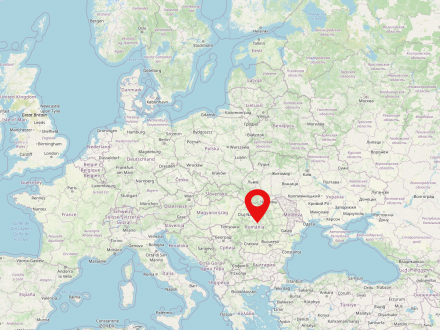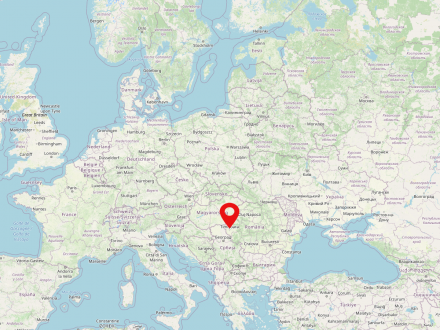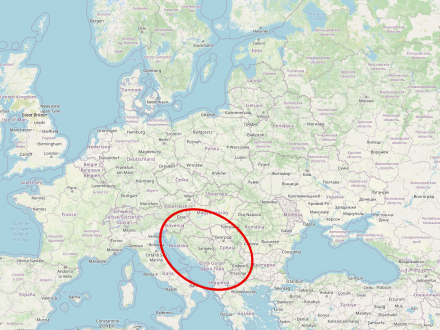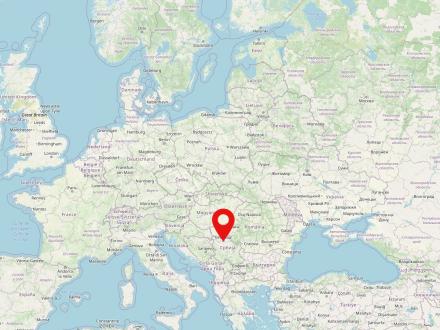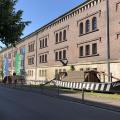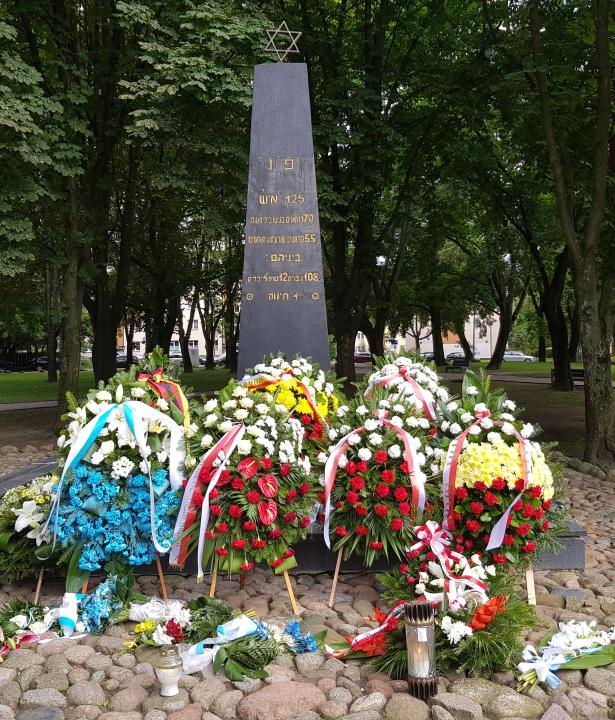Romania is a country in southeastern Europe with a population of almost 20 million people. The capital of the country is Bucharest. The state is situated directly on the Black Sea, the Carpathian Mountains and borders Bulgaria, Serbia, Hungary, Ukraine and Moldova. Romania was established in 1859 from the merger of Moldova and Wallachia. Romania is home to Transylvania, the central region for the German minority there.
Timișoara is a large city in western Romania, not far from the borders with Serbia and Hungary. It was a settlement center of the German-speaking Danube Swabians until World War II. Timișoara has just under 320,000 inhabitants.
Yugoslavia was a southeastern European state that existed, with interruptions and in slightly changing borders, from 1918 to 1992 and 2003, respectively. The capital and largest city of the country was Belgrade. Historically, a distinction is made in particular between the period of the Kingdom of Yugoslavia from 1918 to 1941 (also called 'First Yugoslavia') and communist Yugoslavia from 1945 (the so-called 'Second Yugoslavia') under the dictatorial ruling head of state Josip Broz Tito (1892-1980). The disintegration of Yugoslavia from 1991 and the independence aspirations of several parts of the country eventually led to the Yugoslav Wars (also called the Balkan Wars or post-Yugoslav Wars). Today, the successor states of Yugoslavia are Slovenia, Croatia, Serbia, Montenegro, North Macedonia, Kosovo and Bosnia and Herzegovina.
Then the three are spotted by border guards. Shots are fired, one of the swimmers feels a bullet speed past them in the water. At this point, only luck can help: A cargo ship over on the Yugoslavian shore turns on its headlights. The Romanian soldiers now no longer shoot across the water, they only fire warning shots into the air. Moments later, the escapees hear a motorboat being started. But the engine does not start. "We were very lucky," says Gernot Eamandi later.
Belgrade is today the capital of Serbia and has over 1.3 million inhabitants. The city is located at the mouth of the Sava River, where it flows into the Danube on the border between the Pannonian Plain and the Balkan region. Therefore, Belgrade and its predecessor settlements have always played a strategically important role as a border fortress and an intersection of army and trade routes. Formerly called Greek Belgrade, the city was repeatedly fought over by the Bulgarian and Byzantine Empires and Hungary from the 9th to the 13th centuries. In 1284 Belgrade was ceded to the Serbian king Dragutin, but in 1427 it went back to Hungary. Under Hungarian rule, the city managed to defend itself for a long time against the Ottomans, who nevertheless captured it in 1521. At the end of the 17th and in the 18th century, it was fought over by Habsburgs and Ottomans. At the beginning of the 19th century, the Serbian population revolted against the Ottomans for the first time. In 1839 Belgrade became the capital of the Principality of Serbia, which had been autonomous since 1830 but was still under the suzerainty of the Sultan. After ethnic conflicts between Serbs and Turks, the Ottomans left the city in 1867; as a result, mosques and other Ottoman buildings were demolished. When Serbia gained independence at the Congress of Berlin in 1878, Belgrade became the capital of the state. It was also the capital of the Kingdom of Serbs, Croats and Slovenes proclaimed in 1918 (from 1929 the Kingdom of Yugoslavia). Urban planning was now oriented towards the West and Belgrade acquired the face of a European metropolis. In 1941 the Wehrmacht bombed and occupied the city. Many of the approximately 10,000 to 12,000 Jews living there were deported to camps and murdered. In 1944, the Yugoslav "People's Liberation Army" under Josip Broz Tito captured Belgrade, which subsequently became an internationally important cultural, economic and political center as the capital of the "Federal People's Republic of Yugoslavia" in 1945. In 1961, the Non-Aligned Movement was founded there. When Yugoslavia disintegrated as a result of the post-Yugoslav wars, Belgrade remained the capital of the rump state that consisted only of Serbia and Montenegro. During the Kosovo war of 1998-1999, the city was bombed by NATO.
40 years later, Gernot Eamandi donates his backpack to the Danube Swabian Central Museum in Ulm.



